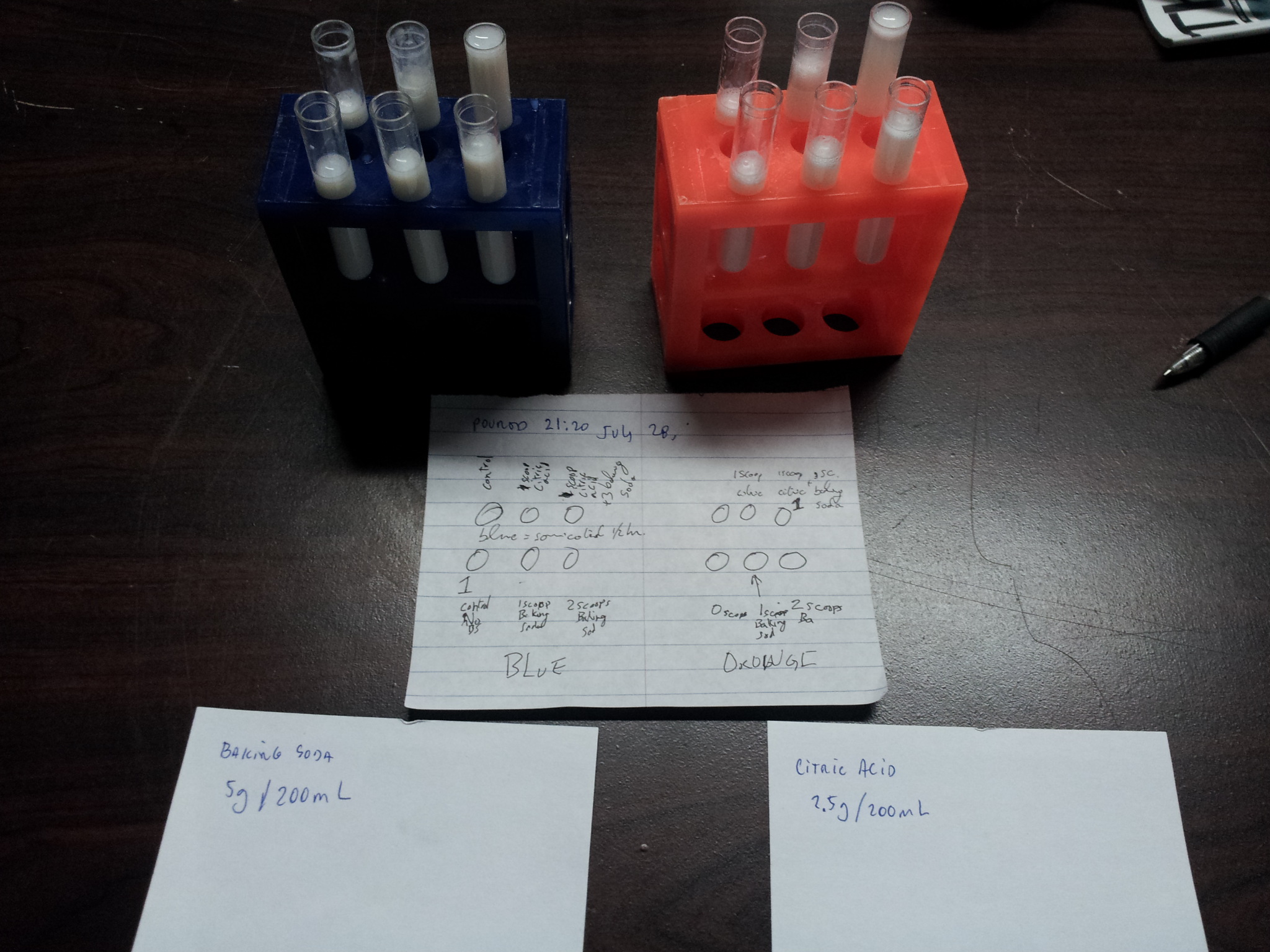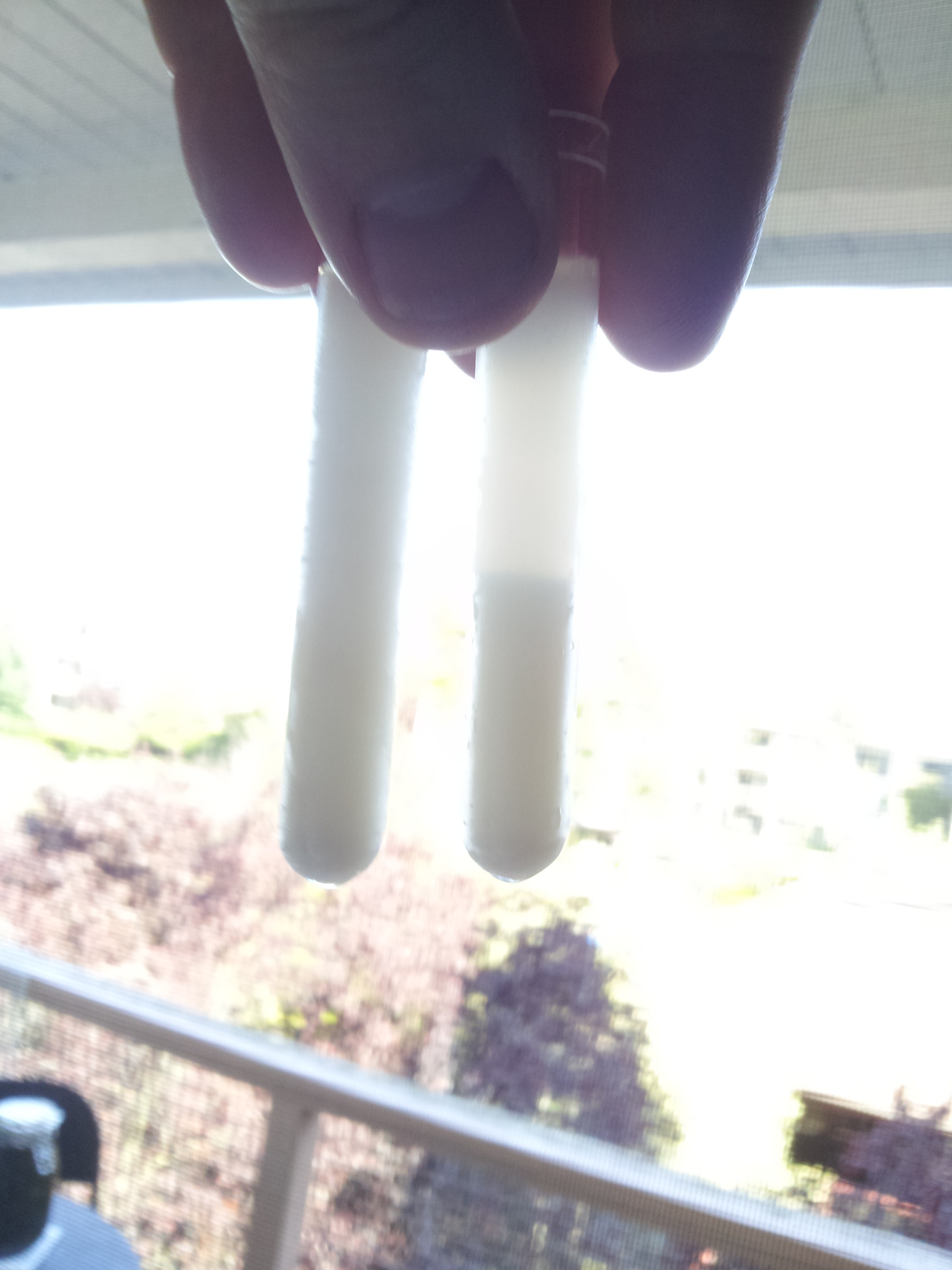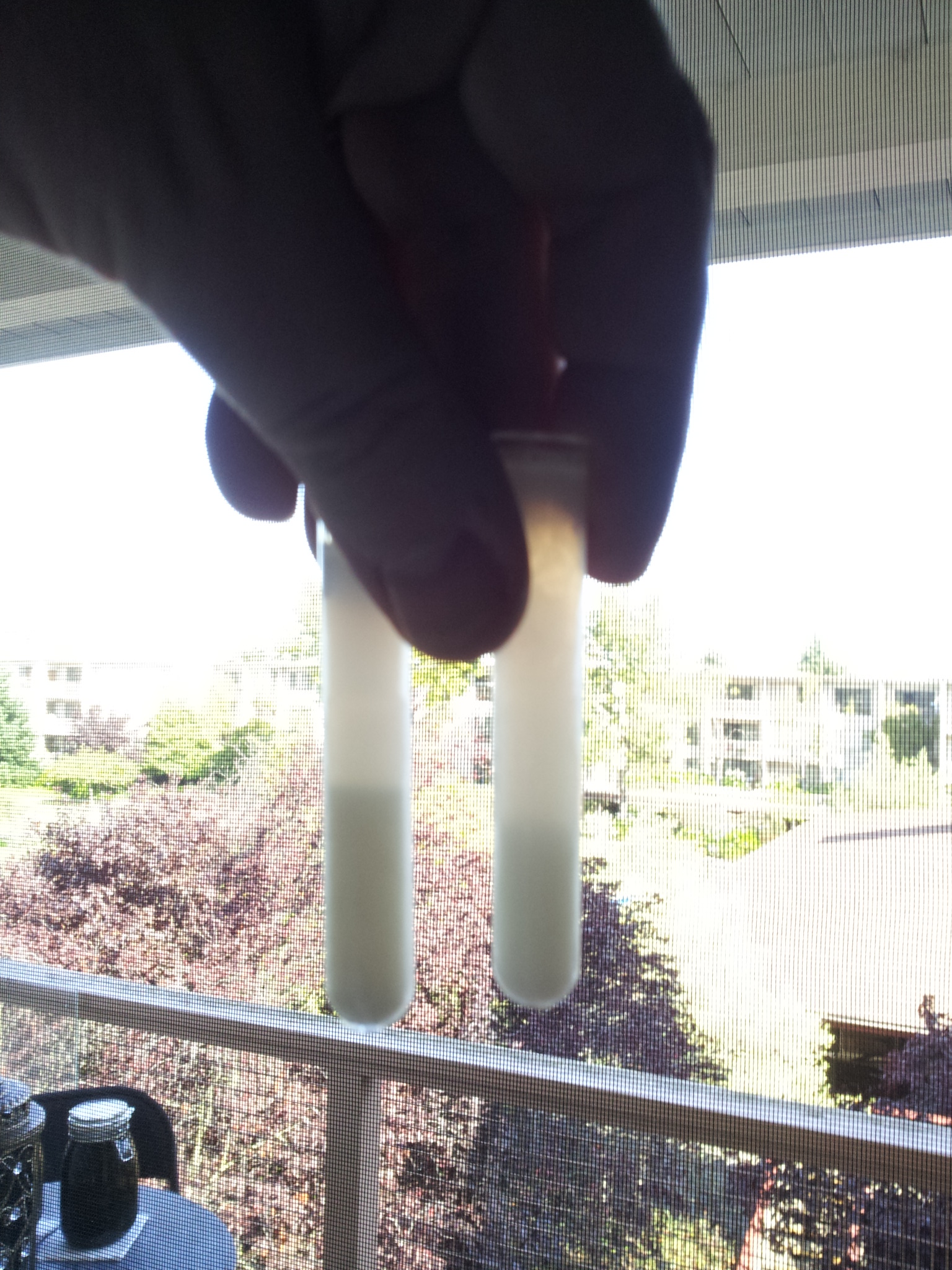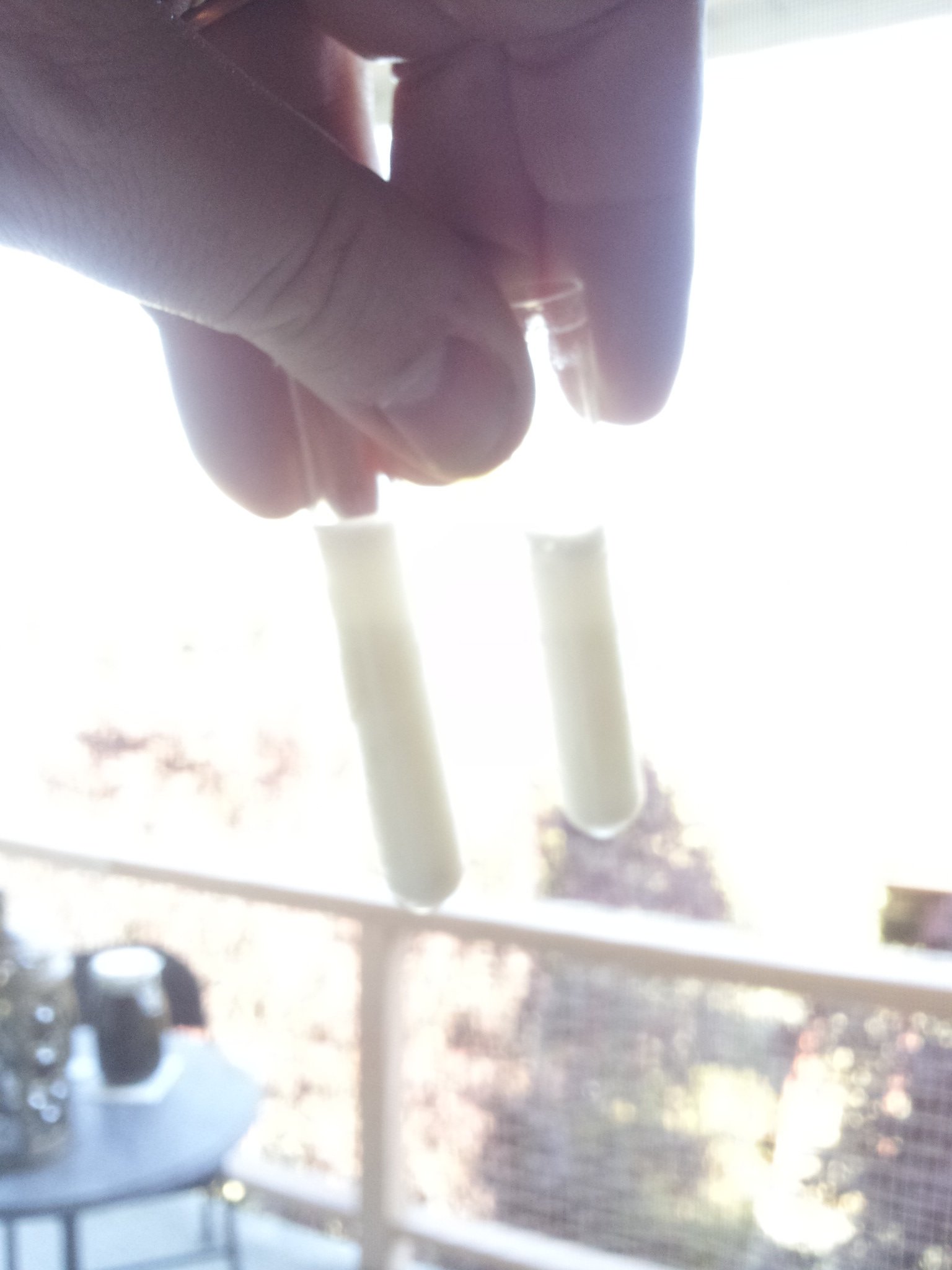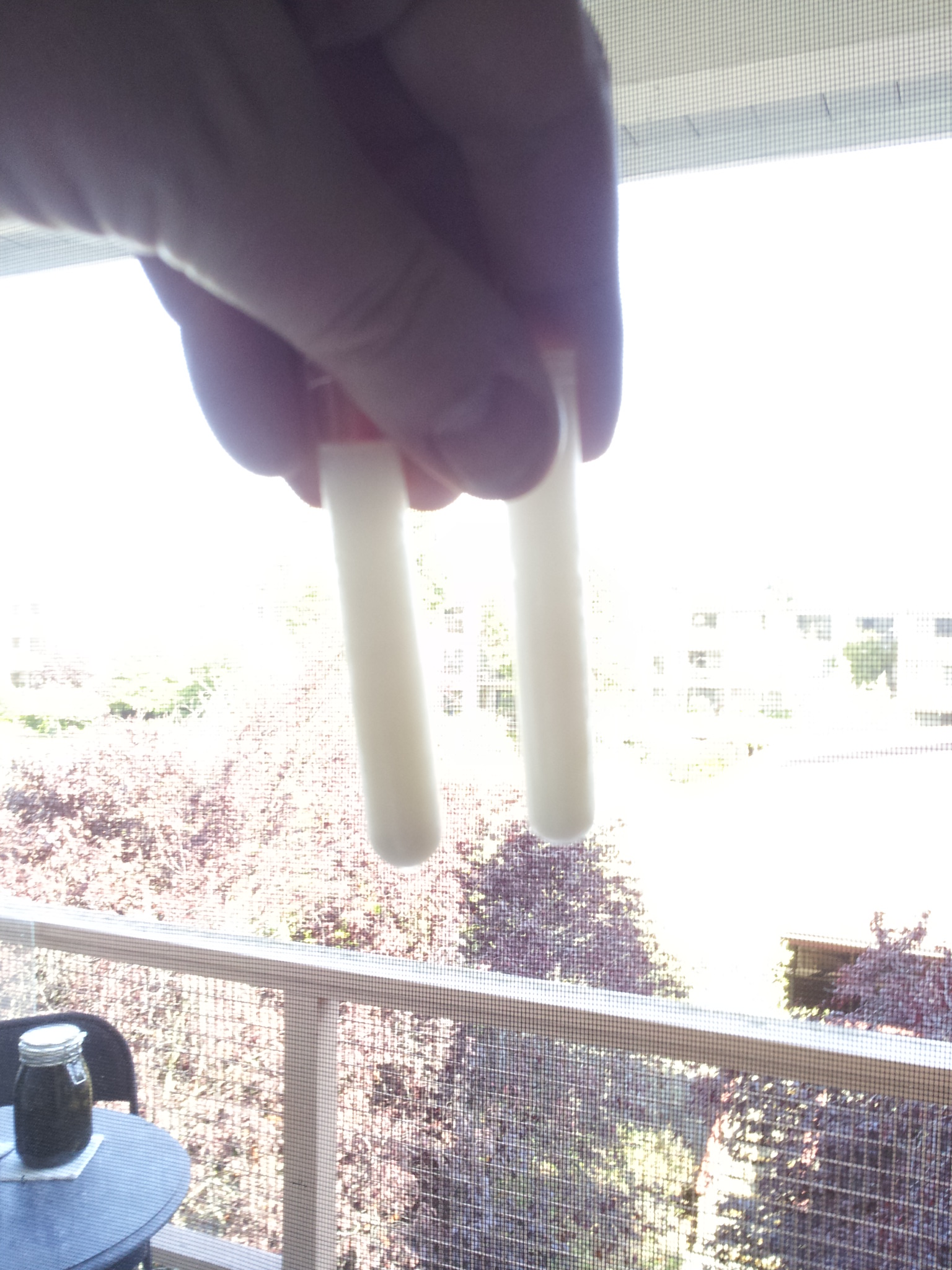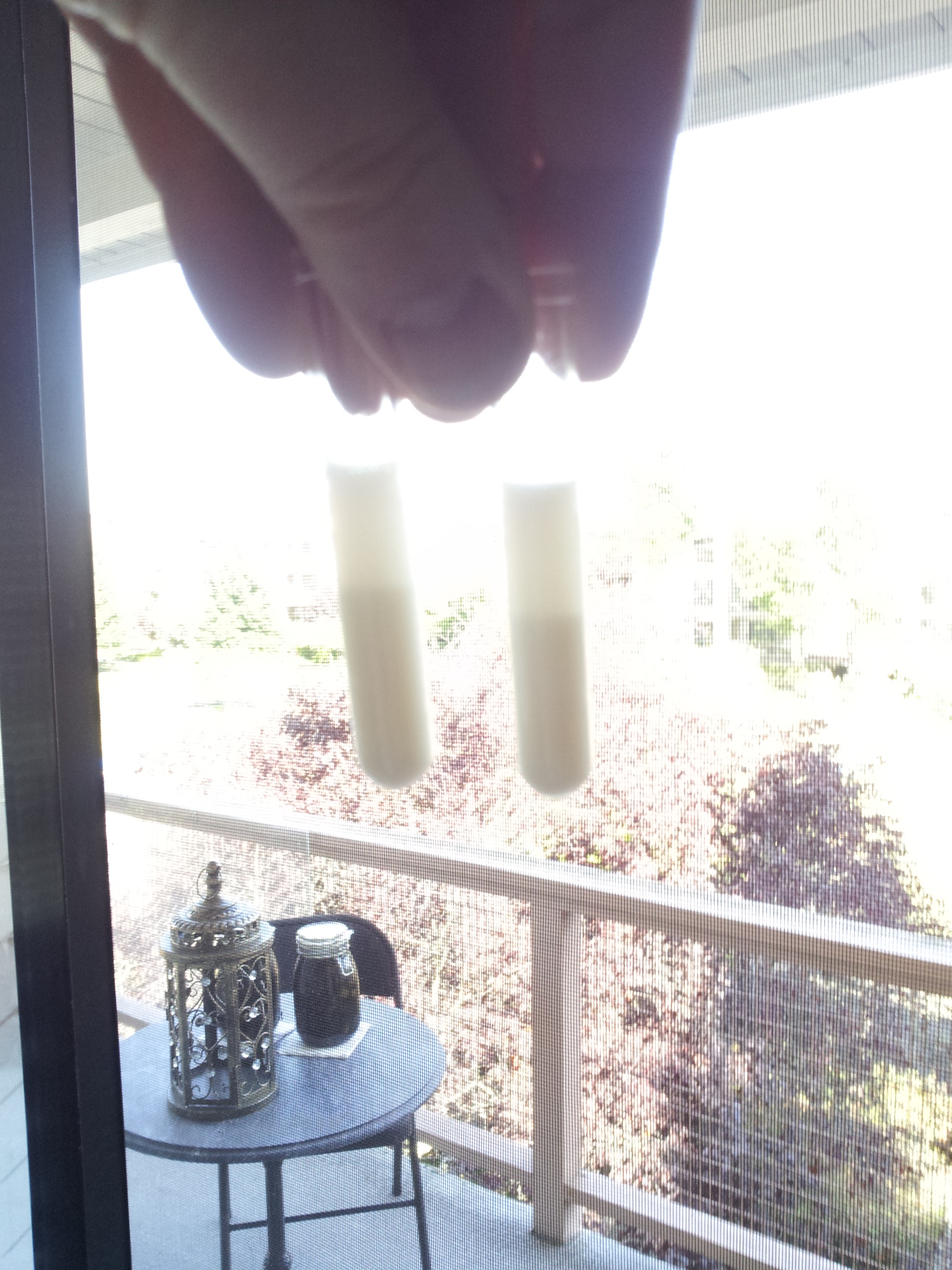Difference between revisions of "Cheese making/Experiment 2"
| (One intermediate revision by the same user not shown) | |||
| Line 6: | Line 6: | ||
= Experiment = | = Experiment = | ||
[[File:14-07-28-2010-IMG 1020.jpg|400px|thumb|right|Casein team - Assemble!]] | |||
Among all the chaos of being in a new space and not having any of the equipment we need at hand, we actually managed to get some real science done. | Among all the chaos of being in a new space and not having any of the equipment we need at hand, we actually managed to get some real science done. | ||
| Line 46: | Line 47: | ||
==Results== | ==Results== | ||
TL;DR: sonication makes a big difference. And plain baking soda seems to work marginally better than citric acid + baking soda. | |||
2 scoops of baking soda solution, with or without sonication. The unsonicated casein on the right clearly settled out of solution overnight; the sonicated on the left is still nicely in solution: | 2 scoops of baking soda solution, with or without sonication. The unsonicated casein on the right clearly settled out of solution overnight; the sonicated on the left is still nicely in solution: | ||
Latest revision as of 05:47, 21 April 2020
Date and Location
- Time: 9 pm on Monday July 28, 2015
- Location: Omni Oakland, CA.
Experiment
Among all the chaos of being in a new space and not having any of the equipment we need at hand, we actually managed to get some real science done.
We tried to dissolve casein powder in water in a couple different ways. One half of the test tubes was sonicated in a jewelry cleaner for about half an hour. One set of tubes was treated with one or two scoops of baking soda solution, until a pH of around 7.2. The other set was first treated with citric acid solution to a pH well below 6, then with baking soda to around pH 7. Tubes were left to settle overnight to check in which ones the casein actually went into solution
- Concern: The accuracy of our pH systems is poor (low-cost eye-dropper/shaker system with range of 6.0 to 7.5, meant for small fishtanks).
- Concern: The "5mL" test tubes did not have a marking for the 5mL level (not precise).
Distilled water: 22.5degC, pH of <6.5 Room temp: 25.2degC
Source of casein: BodyTech 100% micellar casein.(assumed to be acid-casein) Micellar casein, protease (Aminogen®).Contains Milk.
37.5g of above powder slowly poured into 250mL distilled water while blending at lowest setting for approximately 20seconds. After blending, mixture is strained repeatedly to remove air. Strainer is ~16grid per inch.
Above mixture poured into 5ml test tubes and left to settle for 45 minutes. The pH of this mixture is 6.
After 45 minutes above test tubes placed into D.Poole's sonicator (not the Soni-cat) and sonicated for 30 minutes.
Prepared a solution of citric acid 2.5g dissolved in 200mL of water.
Prepared a solution of 5g of baking soda (Nice! brand from Walgreens) in 200mL of water.
Trial and error experiments begin to determine a ratio of the above two solutions that when mixed in 5mL casein/water test tubes result in a slightly alkaline solution of ~7.5pH. The added citric acid and baking soda solutions varied between 0, 1/8, 2/8, 3/8 of a teaspoon per 5mL test tube. Note, some of the casein/water mixture was poured out to accommodate added baking soda and/or citric acid solutions.
The setup of the final experiment was as follows:
12 tubes total; half of the tubes (6) sonicated in jewelry cleaner for 30 min; the others not
Within each set of 6 tubes, half were treated with baking soda (0, 1 or 2 scoops of 1/8 tsp baking soda solution). The other half with citric acid then with baking (control; 1 scoop citric acid solution to ~pH6; 1 scoop citric acid + 2 scoops baking soda solution to ~pH7)
all tubes left to settle in fridge overnight
setup - sonicated in blue; baking soda only in front:
Results
TL;DR: sonication makes a big difference. And plain baking soda seems to work marginally better than citric acid + baking soda.
2 scoops of baking soda solution, with or without sonication. The unsonicated casein on the right clearly settled out of solution overnight; the sonicated on the left is still nicely in solution:
Unsonicated, baking soda vs citric acid + baking soda. Not much difference:
Sonicated controls - some settling, but not too much, even without any additions:
Sonicated; baking soda only vs citric acid + baking soda: baking soda only looked marginally better in person; hard to see on the pics:
Unsonicated controls; this is what happens when you just try to dissolve casein powder in water and let it sit for an hour or two:
Discussion
Ben: The one thing I would be slightly worried about in general is that sonication can actually break molecular bonds in polymers. One of the reasons that sonication is so great at dissolving polymers is that it often will break the chains and the lower molecular weight material is more soluble. Those sonicators at the Omni last night were not very powerful though, so in this case we are likely okay. It is something to think about if we ever use a more powerful sonicator.
- Patrik: The paper that Rachel dug up about shear blending and sonication for casein dissolution addresses that specifically. Apparently, even high power sonication does not break up the micelle structure itself, but it does break up the much larger casein powder particles.
- I bet it's an issue of matching the resonance frequency of the size of the particles being broken up - sonication does wonders at breaking open cells and clumps of casein powder, but you'd probably need much higher frequencies and power levels to break open molecular complexes, even one as large as the casein micelle.
Craig: Do you think that our Casein will be a powder? or will it already be soluble in Vegan Growth Media? My hope is that we will only have to concentrate the protein, perform a buffer exchange, and make cheese from that...
- Patrik: Yeah, practically speaking our recombinant casein will almost certainly not be a powder. However, we may be able to use its change in solubility with pH and Ca levels to make the protein crash out of solution for easy separation.
- So we might start out with 3-4 insoluble pellets of the different casein proteins, resolubilize them by changing pH and Ca concentration, and mix them together under sonication to let casein micelles form.
- We could also use the suspended casein powder versus dissolved casein micelles to start getting some experience measuring particle sizes and micelle properties. It would be useful to have a purified non-micellar casein as a control for this as well.

